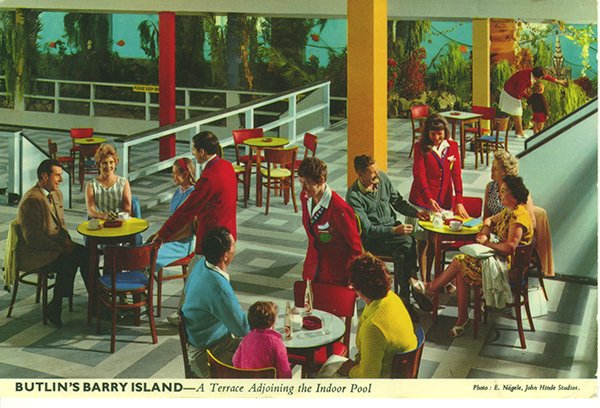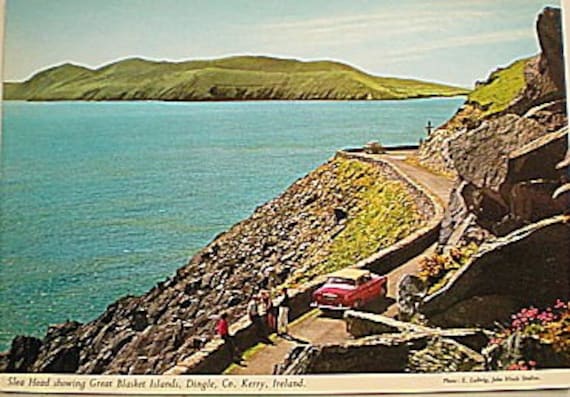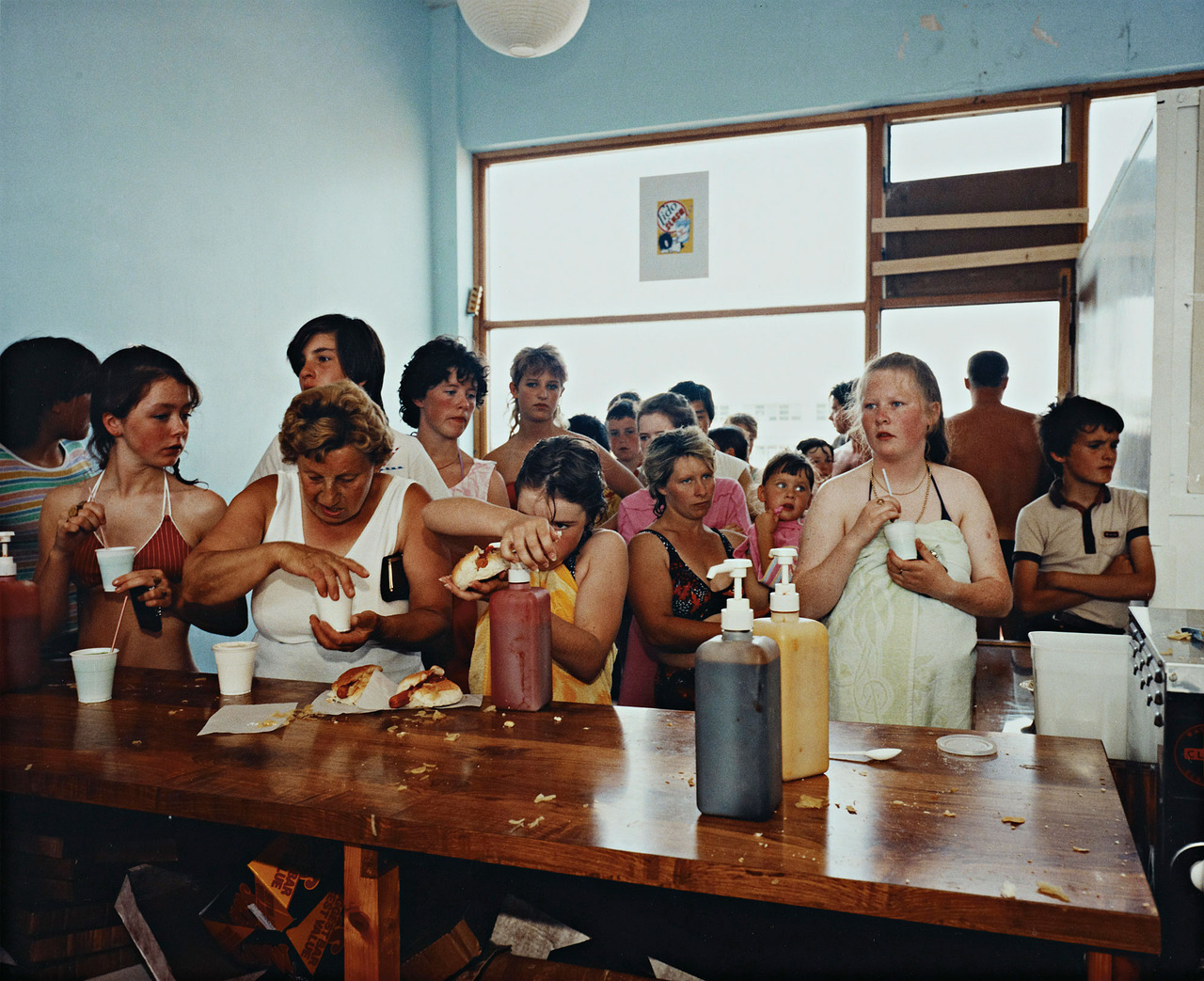John Hinde was an English photographer, probably most famous for his iconagraphic postcards, particularly of the Butlin's Holiday Camps. He was most active in the 60s, having established his own photography comapany, John Hinde Ltd, and became known for his photographs of the Irish landscape around Dublin. At the time, most postcards were printed in black and white as it was thought this better captured the romantic landscape of Ireland. Hinde, however, favoured colour photos and wanted to capture the vibrancy of the Irish countryside. He would plan his photographs meticulously, often adding things to the scenery or hiding them with rhododendron bushes in order to get the ideal composition. He would spend entire days setting up a photograph to his liking. As well as painstakingly planning a photograph, Hinde would edit the colours in the image to enhance the energy of a scene. This is evident in most of his photographs; the colours seem to burst out at the viewer, forcing their attention to the activity in the scenery. The postcard above, for example, "Butlin's Barry Island", highlights the postive interaction between the staff and holiday-makers with his use of brightly coloured clothing and the close proximity of the subjects.
The two postcards above, both taken in Ireland, to me, have a wonderfully tacky fifties/sixties look to them because of the enhanced colours and calculated composition. Hinde had a strict formula when it came to composing a photograph which makes his work easily recognisable. Nowadays photographers generally like to make their photographs looks more spontaneous and open; there aren't as many conventions and rules to follow. However, many artists and photographers have been inspired by Hinde's iconic work.
One of these photographers is Martin Parr whose photographs exposing the tacky-ness of British culture have the same empahisis on the colour and activity in a scene.
This photograph is one of a collection published in 1986 titles Last Resort: Photographs of New Brighton. The collection is full of photos documenting British holiday-makersmaking the most of the English summer. It reveals the awfully tacky side British culture and its desperate bid to take advantage of the short summers we have. As soon as the sun comes out people will want to sunbathe, take their children to parks and beaches and wear as little clothing as decently possible. Unlike Hinde, Parr doesn't choreograph his photos but takes a documentative approach to photography. It makes his photos feel more intrusive and gritty than Hinde's composed scenes. Parr wanted to document and highlight the habits of ordinary British people.
When I look at the picture above I can imagine the clammy feeling of being crammed in a badly conditioned diner with irritable parents and hyper children surrounding me. The photograph perfectly captures the situation so that I can empathise with the people inside it. The image is also particularly effective because of the claustrophobic environment with so many people inside; it looks busy and you can sense the impatience of the people queuing towards the back. I also love it because it's so quintissentially British; there's fast food, tea, rosy faces and queueing!






No comments:
Post a Comment